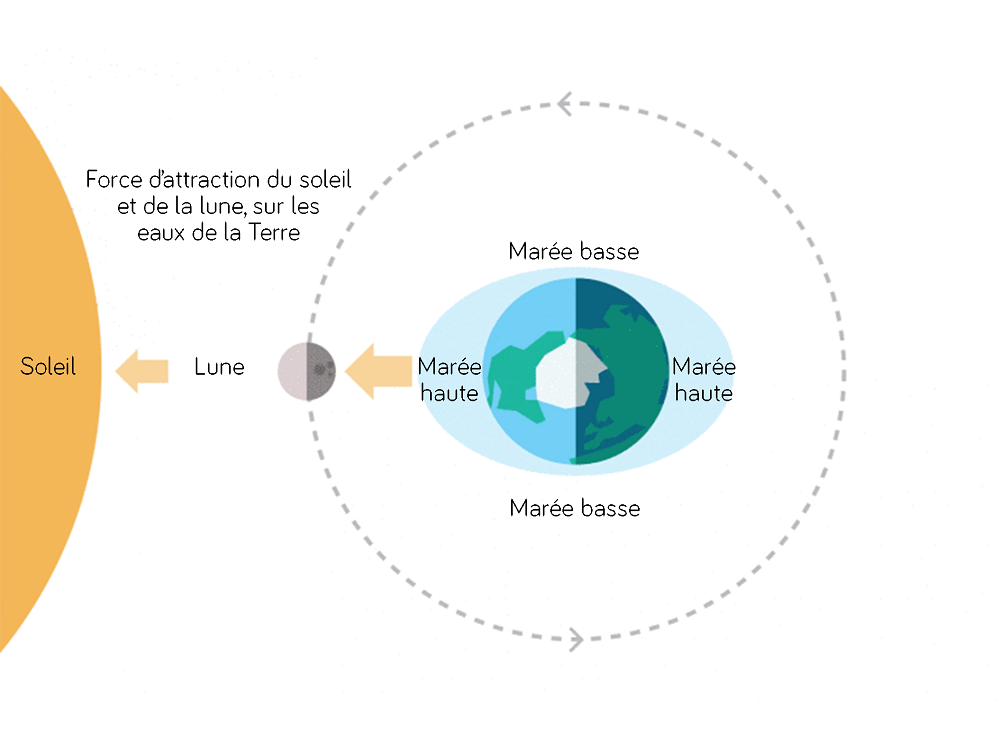Understand in a flash
How to Read a Tide Clock Dial
Although at first glance the tide clock looks very much like a traditional clock, a closer look reveals its unique features. At the top and bottom of the dial, the numbers have been replaced by the inscriptions “High Tide” and “Low Tide.” On each side of these inscriptions, you’ll find numbers ranging from 5 to 1, indicating the time remaining before the high or low tide.
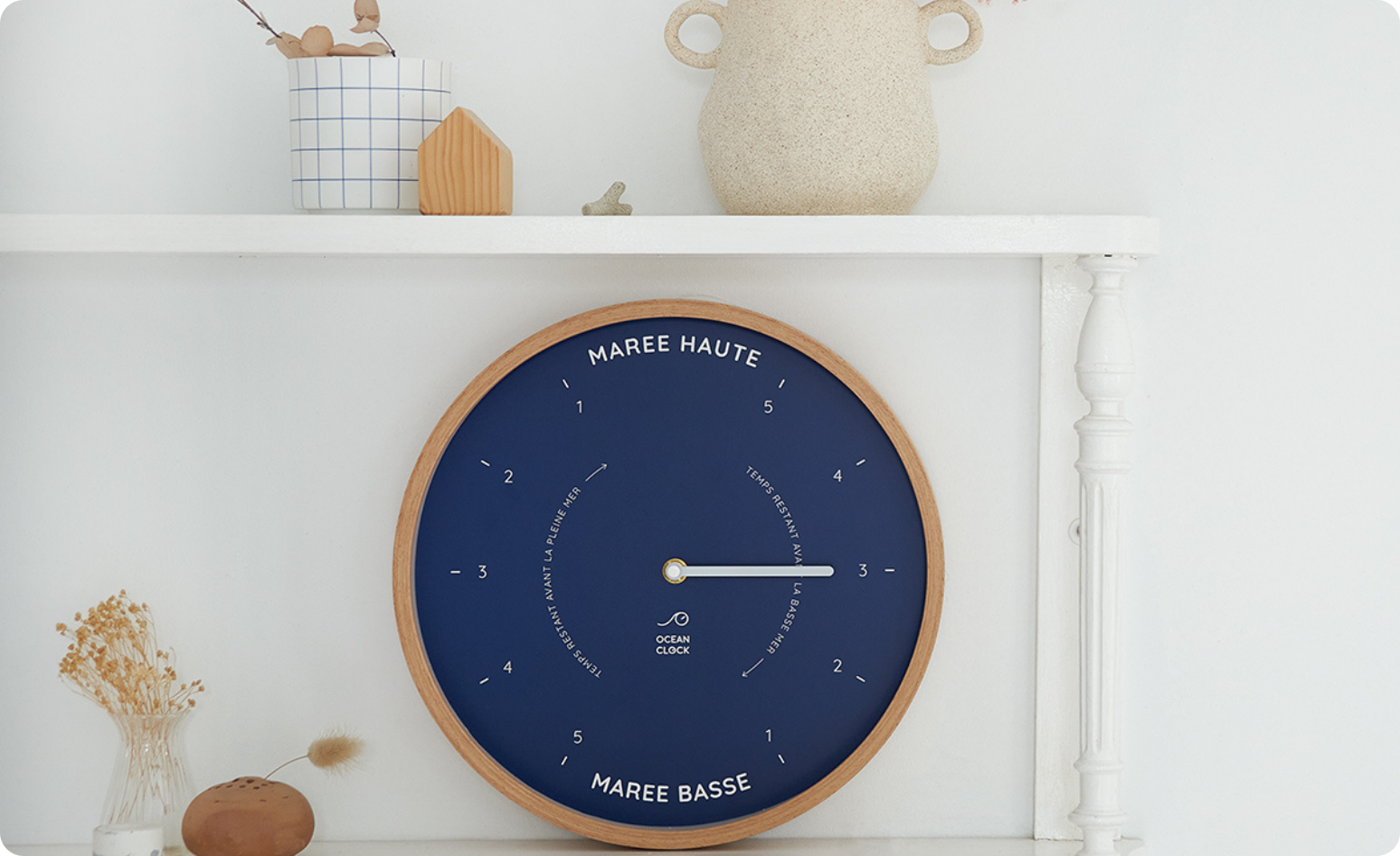
Simplified Reading
At first glance, you might expect to see the usual time on a tide clock, but this clock serves a different purpose. As its name suggests, the tide clock is designed to indicate the state of the tides rather than the regular time. To do this, it doesn’t have two or three hands like a traditional clock, but a single customizable hand that you can personalize with the inscription of your choice.
At Ocean Clock, we have redesigned the tide clocks to modernize them and soften the very nautical look of previous models. We aim to make this tool a true decorative object that fits current interior design trends.
Furthermore, to make the tide indicator more accessible, since 2015 we’ve offered clocks with a clean, minimalist style that makes the dial easier to read while highlighting its primary function: showing the tide status.
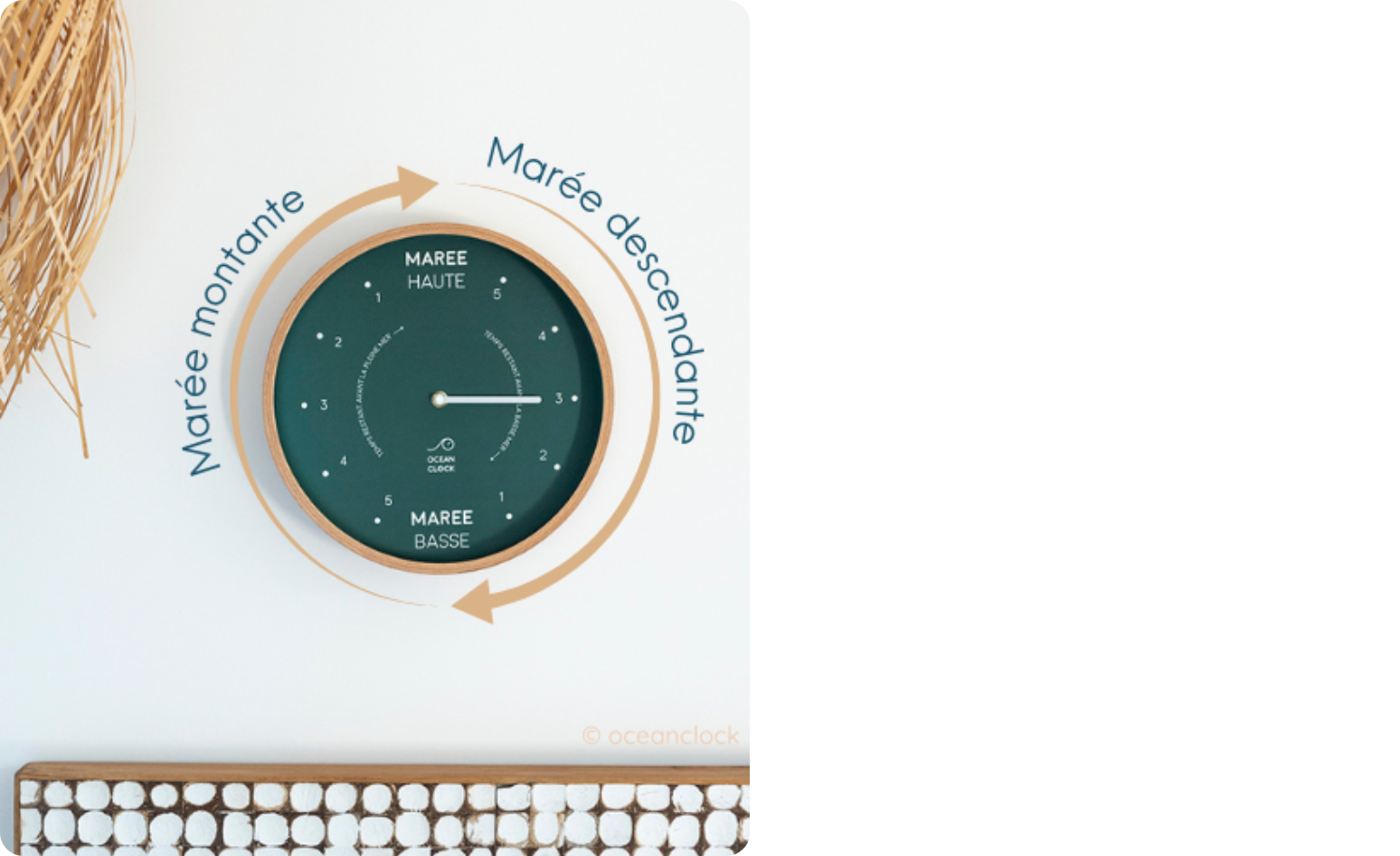
Its dial at a glance!
Do you spend too much time searching for tide times online or trying to decipher complicated tide charts? With the tide clock, a simple glance is all you need to know if low tide is approaching!
Besides being a stylish decorative piece you’ll be proud to display in your home, the Ocean Clock tide clock is highly readable and shows all the necessary information to read the dial. You’ll find markings on the dial indicating how much time is left before each tide.
Easy to use, it allows the whole family to keep track of tide times. So, always be ready to head out to sea!
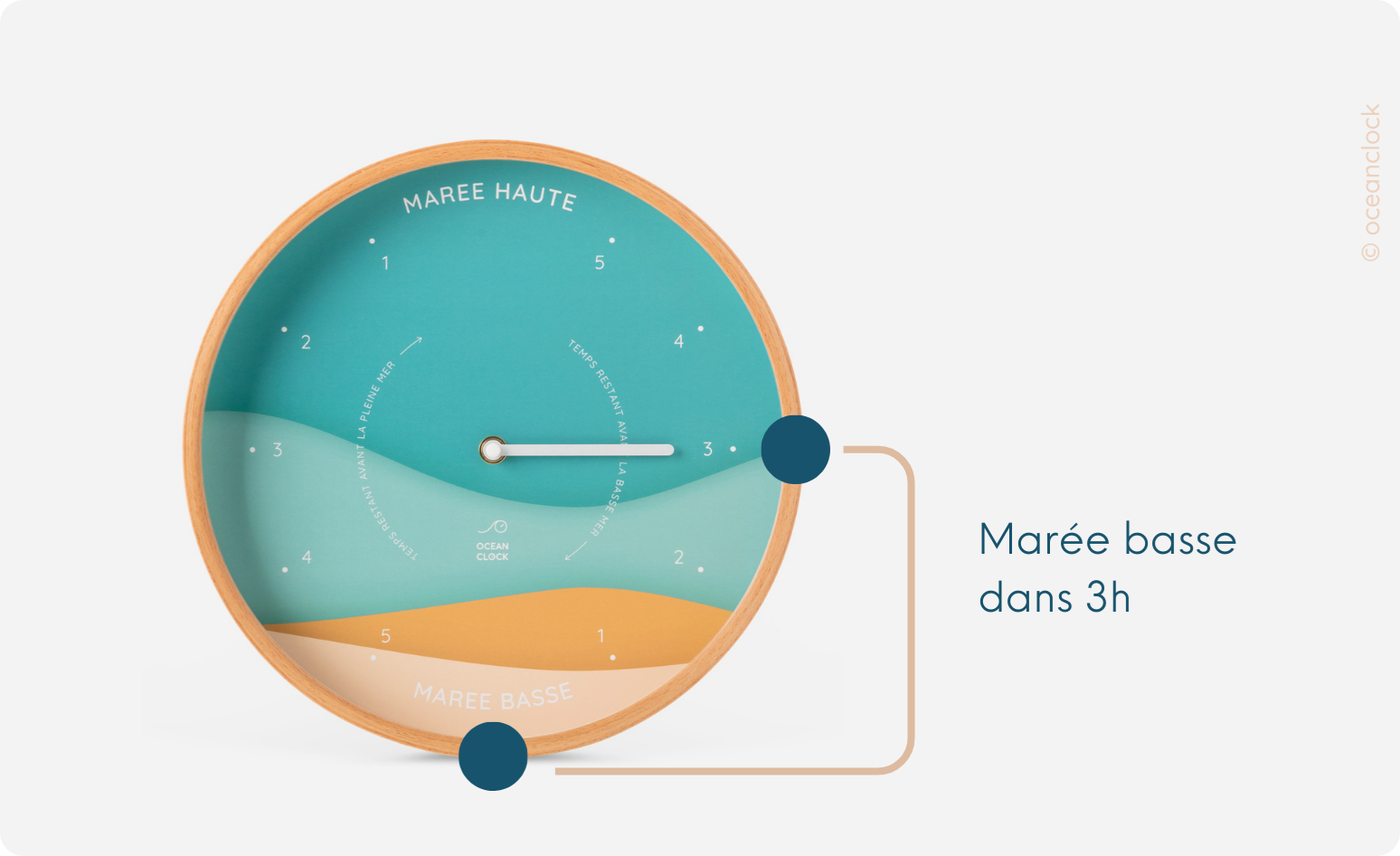
Have you never owned a tide indicator and don’t know how to interpret it? To help you fully enjoy your clock, we will guide you in better understanding the indications of the tide clock.
First of all, you should know that the hand moves in the same direction as a regular clock. Since your eyes are used to the clockwise movement, you won’t be confused when checking the tide status on your clock.
Qu'indique l'aiguille ?
Let’s decode the position of the hand on the tide indicator together. When the hand is positioned on the left side of the dial, it means the tide is rising. Conversely, if the hand is on the right side of the dial, it indicates the tide is falling.
In the photo above, the hand shows that the tide is going down and there are 3 hours left before low tide. Simple, isn’t it?
Feel free to check out the short video we made. It explains in 3 easy steps how to read a tide clock: here.
After that, you shouldn’t have any trouble reading your tide clock!
If you want more explanations, our team will be happy to inform you and answer all your questions about our tide clocks.
VIDEO (1 min): HOW TO READ A TIDE CLOCK?
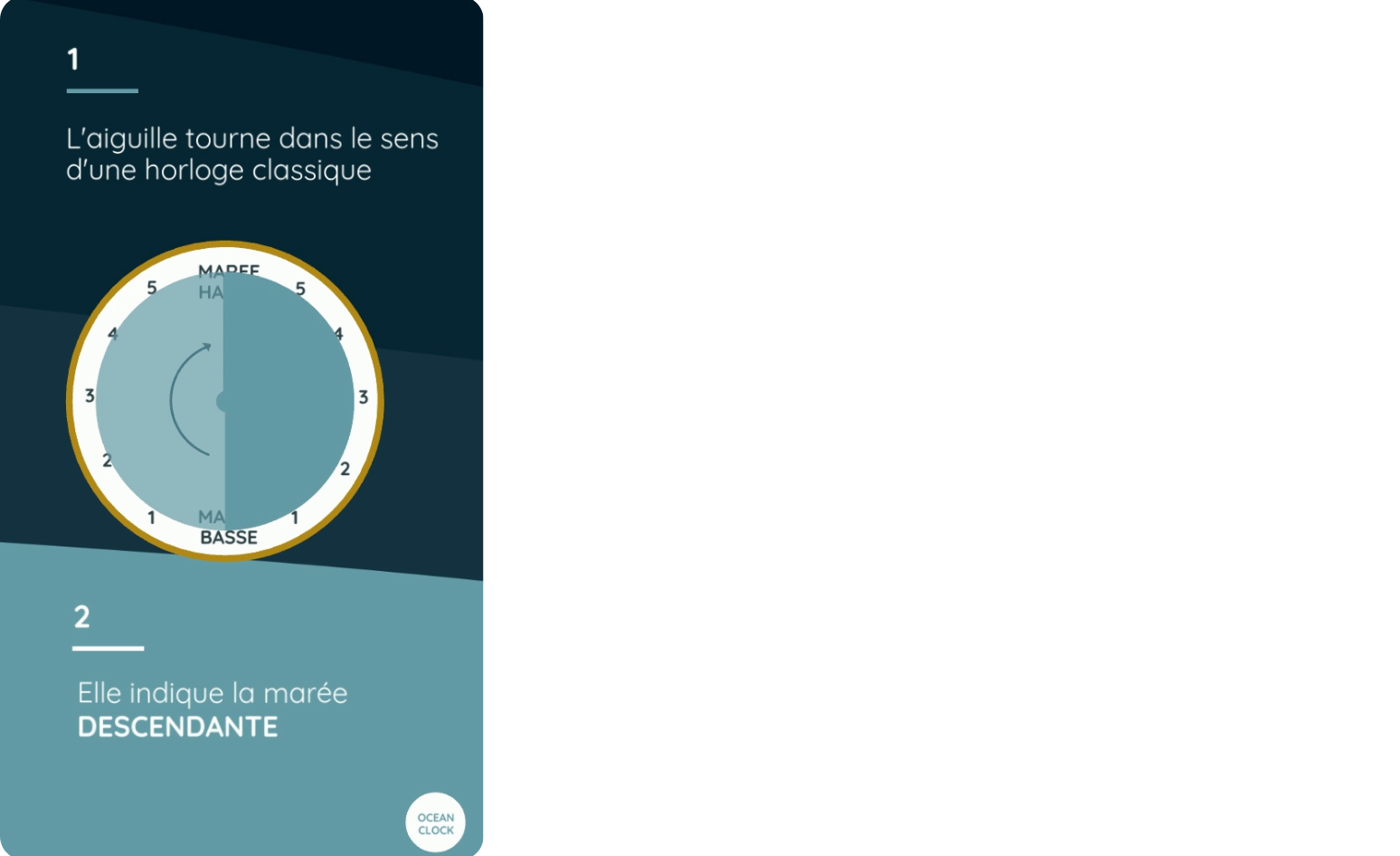
Learn more
Tides result from the gravitational pull of the Moon, which attracts the ocean water towards it, creating a "bulge" of water on the side of the Earth facing the Moon. Simultaneously, on the opposite side of the Earth, a second "bulge" forms due to the centrifugal force caused by the Earth's rotation. This phenomenon causes two high tides each day.
The Moon’s influence is not constant because it follows an elliptical orbit around the Earth. When the Moon is closer (at perigee), the tides are stronger — these are called spring tides (marées de vives-eaux). Conversely, when the Moon is farther away (at apogee), the tides are less pronounced. The Sun also affects the tides, but its influence is about half as strong as that of the Moon. During syzygies, when the Moon and the Sun are aligned (new and full moons), the tides are at their highest, also called spring tides.
Thus, reading the dial of a tide clock allows you to easily follow this natural phenomenon, showing the alternation between high tide and low tide. Although the instrument cannot predict subtle variations, it provides a very practical estimate for daily activities.
Find HERE our blog article about the fascinating topic of how tides are formed!
